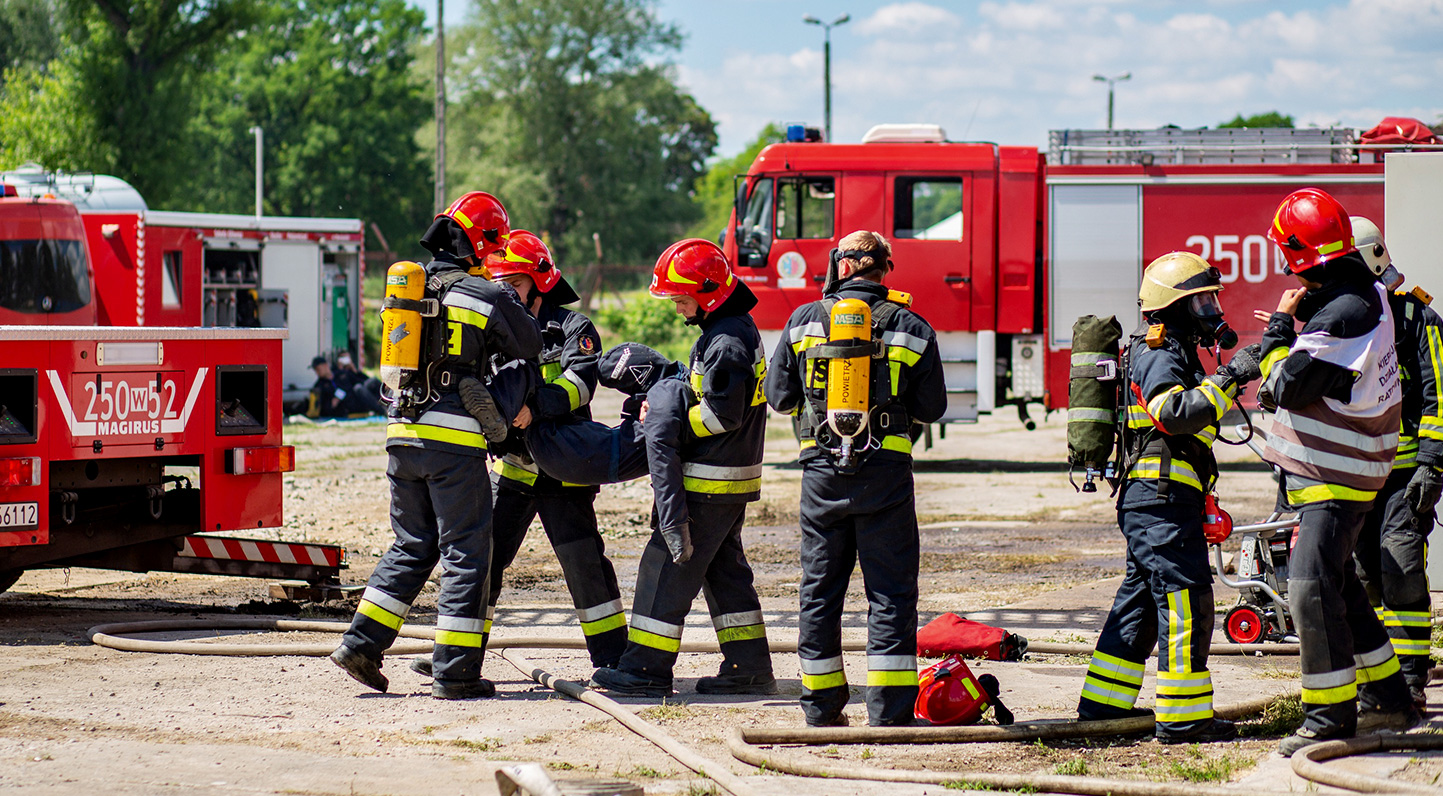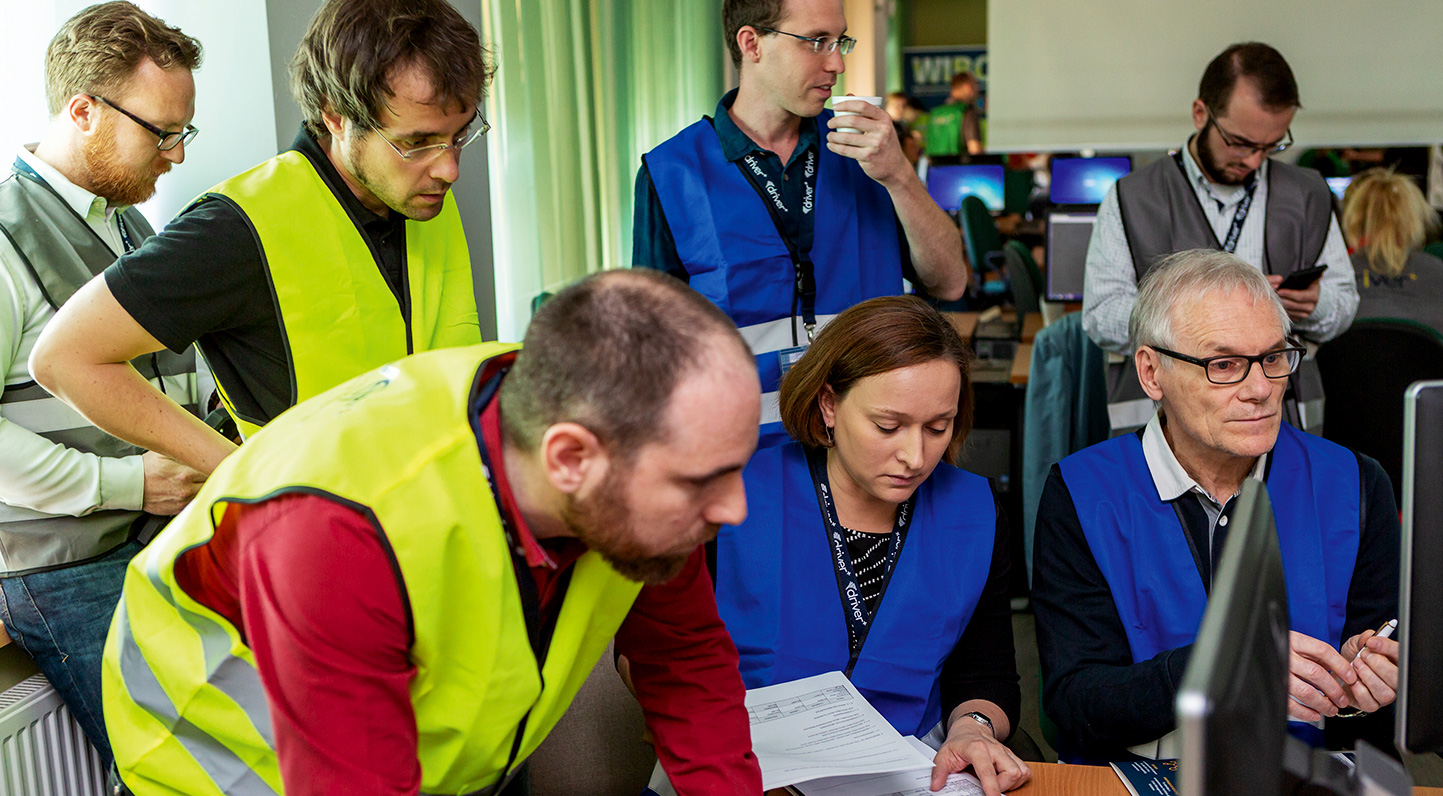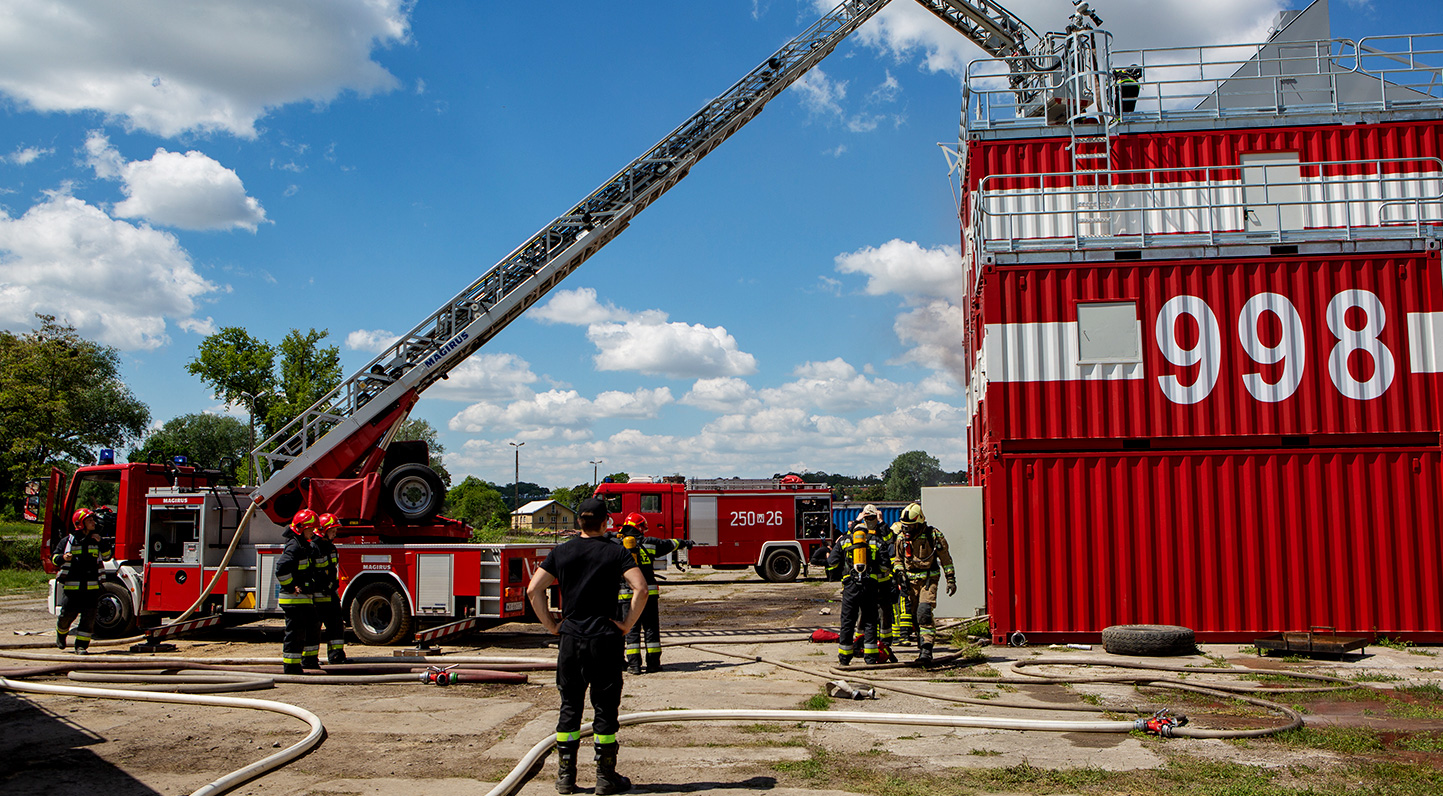Preparation phase in Poland
This example presents an excerpt of the preparation phase in the first DRIVER+ trial hosted in Poland. It demonstrates the six step approach of the preparation phase starting from one of the trial objectives and follows one gap, as well as one research question. Accordingly, the later steps of formulating the data collection and evaluation plan, scenario formulation and solution selection will also focus on this narrowed scope for illustration purposes.

Objective
The overall objective was to simulate coordinated actions at the local, regional, national and international level with the purpose of counteracting the effects of the disaster effects and to trial selected solutions for their applicability in addressing current crisis management gaps. The sub-objective relevant for this example is to improve the effectiveness of identifying the needs of affected people trapped in buildings in the chemical spill area through:
- Shortening the time to indicate/point on the map the location of the residents in need.
- Improving the accuracy of the identification of the type of needs.
Gap
Among others, one of the identified gaps was the insufficiency in terms of resource management (human resources, hardware, etc.) during multi-stakeholder long-term rescue operations.
Research Question
A research questions was formulated specifically for the gap mentioned above. Gap specific research question: How can cross-border resource management be supported through sociotechnical solutions during multi-stakeholder long-term rescue operations? Accompanying with this research question, an assumption was formulated, which is to be assessed through the data collection and evaluation plan. Such an assumption is not required by the methodology, but it might help in guiding further actions.

Data Collection Plan
The trial was executed as a simulated table top and field experiment, which motivated the use of dedicated observers, who recorded and documented the actions. For the evaluation purposes of this part of the trial, the data below was collected, evaluation questionnaires filled in by the observers and aimed at recording operational decision time slots (from achieving the data collected during the drone flight to the end of counting or measurements).
Evaluation questionnaires on three dimensions (crisis management, trial and solution dimensions) filled in by:
Practitioners: providing feedback (data) regarding quality of the trial as well as usability, innovation, user friendliness and other aspects of the solution.
Observers: providing feedback (data) regarding observed organisational difficulties of the trial conduction, external constraints that may influence the trial results.
Besides overall satisfaction and usability scores from questionnaires, further KPIs have been defined to assess the potential improvement in crisis management achieved by applying new solutions.
KPI 1 – Number of identified needs in total indicated by coloured flags.
KPI 2 – Time for decision-making.
KPI 3 – Types of identified needs indicated by the correct identification of coloured flags.
KPI 4 – Location of the needs.
Evaluation
In order to enable the assessment of improvements, multiple sessions have been executed to compare the current mode of operation in the baseline to the innovative solutions in the Innovation Line. This enabled a comparison between these sessions. The combined observations support the assessment of the results in light of the specific trial execution considering difficulties and constraints as well as the three evaluation dimensions crisis management, trial and solution.
Plan Scenario
The scenario of the trial includes a massive release of liquid toxic substances because of a maintenance failure in a reservoir collecting chemical waste. A valve failure means that the pumps, pumping chemical waste liquid to the reservoir, cannot be switched off. Due to this, there is a rapid inflow of a significant amount of a liquid, mud-like toxic chemical to the retention reservoir. The dikes of the reservoir are weakened after prolonged rainfall during past few days. Due to increased pressure, the dikes break.
Selected Solutions
Drone rapid mapping - The solution enables very fast generation of orthophoto maps based on imagery acquired by a drone (RPAS) available to rescue or crisis management actors. The resulting maps could be viewed and analysed in the dedicated geoportal or any GIS environment already utilised by crisis management institutions. The additional product was a 3D model of the terrain, enabling better and more intuitive understanding of the area of interest.

